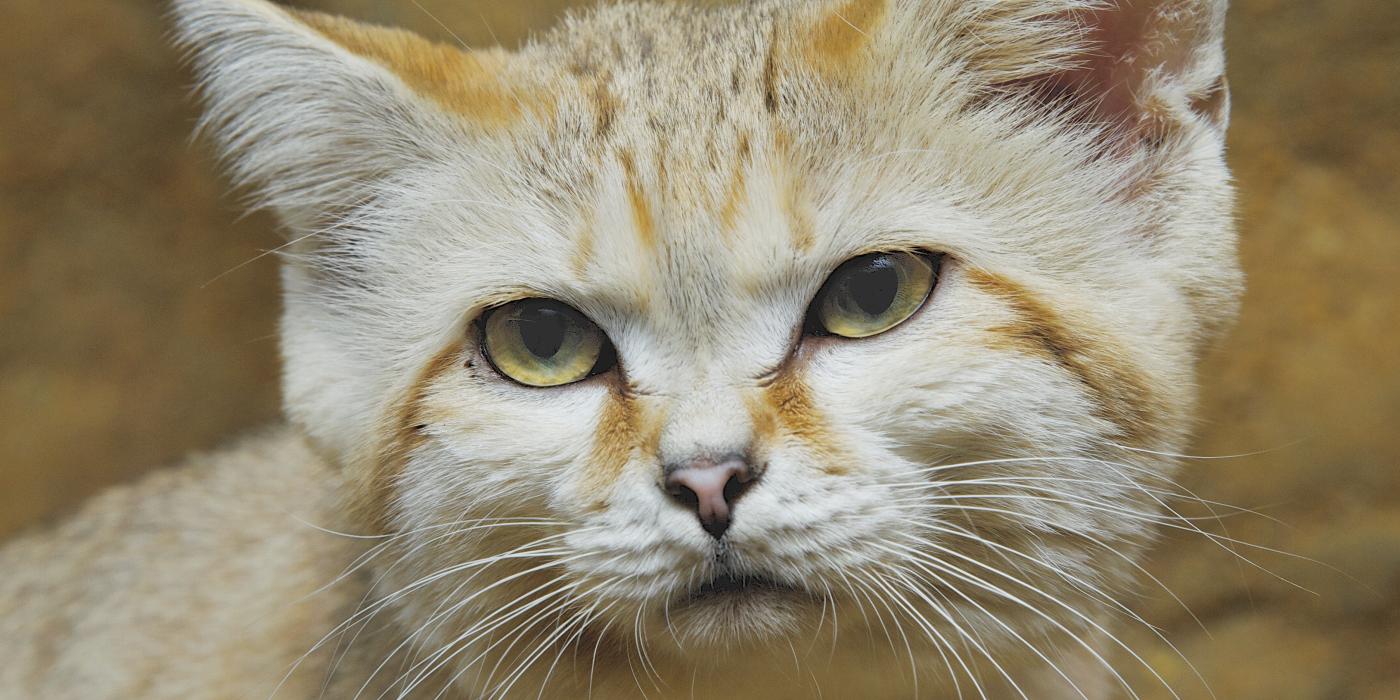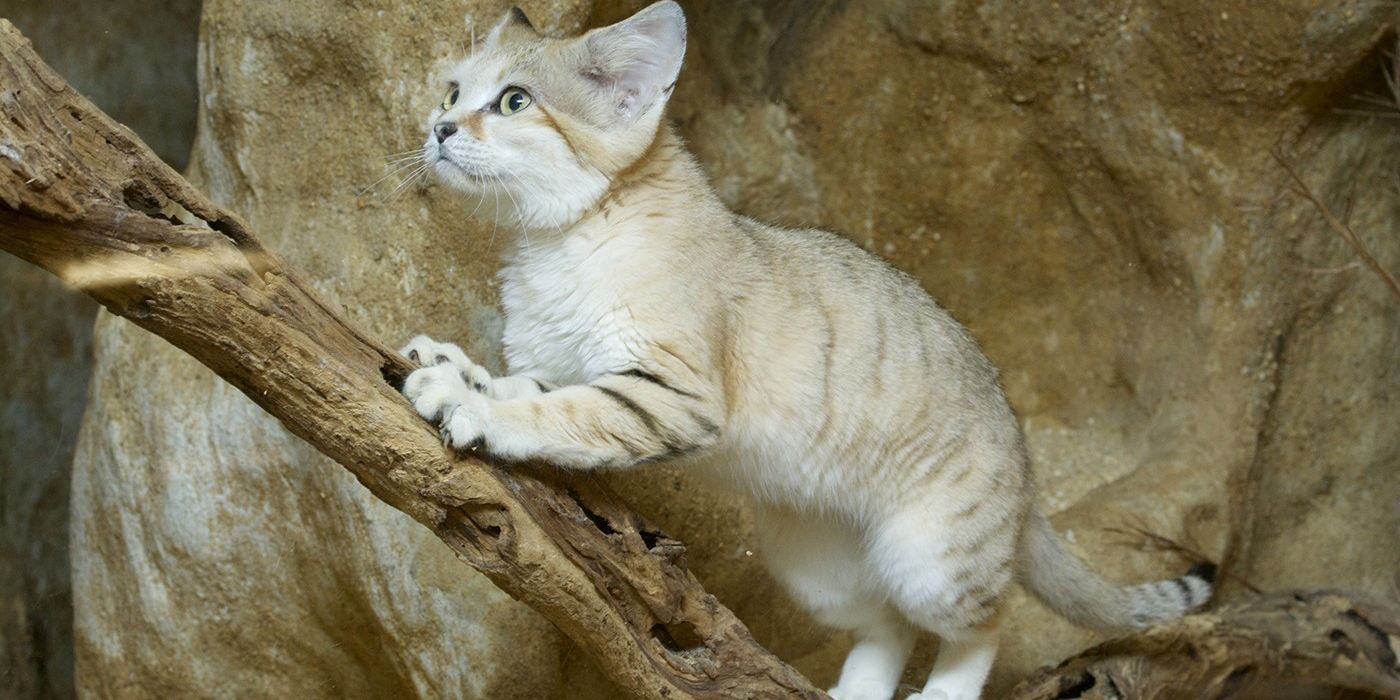Small Mammal Q&A: Learn About Sand Cats

If you've visited the Small Mammal House recently, you may have noticed that our male sand cat Thor now has a female companion! One-year-old Lulu arrived at the Zoo in May and, after a routine period in quarantine, she was introduced to her new exhibit mate. You can tell them apart because Thor's face is more rectangular-shaped whereas Lulu's is more oval. Biologist Kenton Kerns and keeper Maria Montgomery share the scoop on the Zoo's sand cats in the latest Q & A.
What's the coolest fact about sand cats?
Sand cats are a very secretive species. One reason that they're hard to study is that their foot pads have fur, which means they can walk on the sand and leave little to no tracks. Here at the Zoo, their exhibit temperature is the same temperature year-round. But they're built to withstand very hot and cold temperatures in the wild by burrowing into the sand.
Meet the Zoo's sand cats
Both Thor and Lulu have a lot of personality! Thor is very outgoing, curious, and friendly towards his keepers—especially at mealtimes. He's also very engaged during training sessions and will enthusiastically do the behaviors asked of him (following a target, presenting body parts for examination, and the like). Lulu, on the other hand, is much more independent than Thor and has a feisty personality. Within 48 hours of being introduced, Lulu established dominance, and Thor learned his place! They look comfortable around each other and get along very well.
When's the best time to see them?
Thor and Lulu are typically up and about early in the morning when the Small Mammal House opens. They often explore, climb, and interact with special toys and other enrichment items in their enclosure. If you visit in the afternoon you'll probably see them taking a nap.
What are their favorite toys?
We give the cats a variety of enrichment to keep them physically and mentally active, including smells like catnip. It's very clear that they're interested in it—they'll spend quite a bit of time sniffing and investigating the scent before rolling around in the catnip! As a way to encourage the cats to use their natural behaviors, we'll often hide part of their diet in puzzle feeders (pictured above) so that they have to use their paws and claws to get a meal—just as they would in the wild. Of the two of them, Thor seems to enjoy the challenge the most!
Are there kittens in the future?
Thor and Lulu came to the National Zoo on a breeding recommendation from the Association of Zoos and Aquariums' sand cat Species Survival Plan. Initially, they showed a lot of interest and quickly became comfortable around each other. All in all, the introduction went incredibly well!
Our animal care team aims to mimic the cats' socialization as close as possible to what it would be in the wild. The only true social cats are lions; it would be stressful for Lulu to have Thor around while she has kittens. Therefore, we have temporarily separated Thor and Lulu while we try to determine if she is pregnant (gestation is around 60 days).
If breeding was successful, it will be the first litter for both cats. Lulu has a special den in her off-exhibit area that is peaceful and quiet. It's likely she would have kittens there as she is familiar and comfortable with that area. The kittens would likely make their public debut around the time they turn one month old. We are keeping our fingers crossed for kittens!
Related Species:
